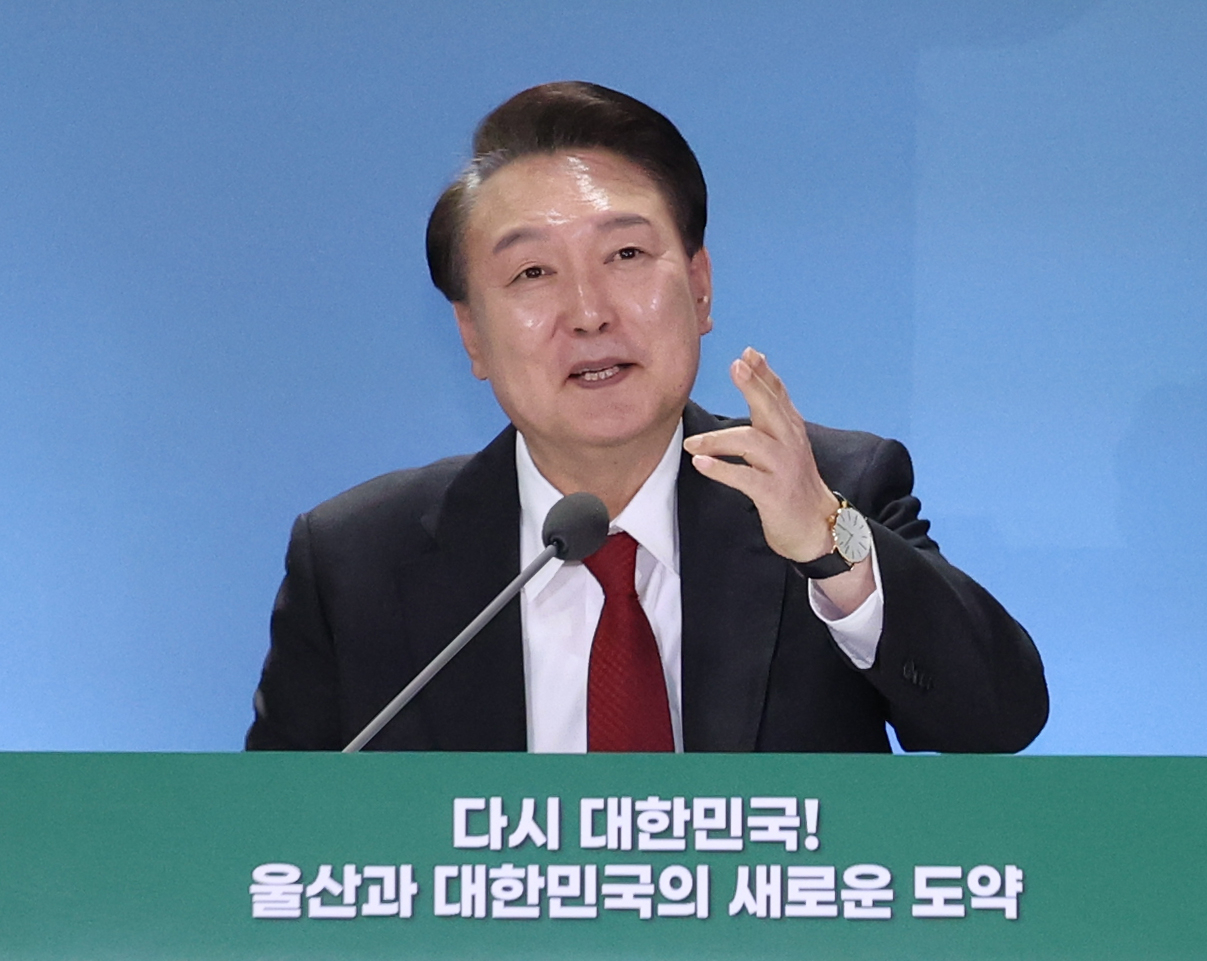S. Korea to permit development in conservation area
By Son Ji-hyoungPublished : Feb. 21, 2024 - 15:53

South Korea is poised to ease regulations on greenfields protected by the government and permit land development projects in such conservation areas in provincial areas.
President Yoon Suk Yeol said the eased rules related to protected areas designated as "greenbelt" could create economic value during the 13th session of the policy debate held in Ulsan on Wednesday.
"The one-size-fits-all land regulations concerning the greenbelt designation will be addressed for the first time in two decades," Yoon told some 100 participants.
"Factors such as the high elevation or steep slope of the land have hampered the release of greenbelts, and these regulations will no longer exist. Regulations will also be eased on conservation areas with decent urban infrastructure nearby so (developers) will easily use the land for economic purposes."
The conservative government on Wednesday also pledged to give a local autonomous governments greater power to scrap the "greenbelt" designation of conservation areas and skirt regulations on the condition that these areas are to be transformed into new strategic industrial zones.
"I have stuck to the principle of rebalancing national growth where local government entities explore chances of developing their own strategic industry, and where the central government supports their goal policy-wise and budget-wise."
This is the first announcement in nine years by the government aimed at easing the greenbelt regulations.
As of end-2022, over 3,800 square kilometers of land nationwide -- or 4 percent of the land in South Korea -- is subject to land development restrictions, aimed at curbing the speed of industrialization.
The concept of greenbelt policy was first introduced in 1971 during the former Park Chung-hee administration, inspired by the greenbelt in London. During the Park regime, a total of 5,400 square kilometers of land, which translates into 5.4 percent of the country's land, has been designated as the greenbelt.
Former presidents Kim Dae-jung, Roh Moo-hyun, Lee Myung-bak and Park Geun-hye have shrunk the protected area by 30 percent. No additional greenbelt designation has been made so far.
The relief will, for example, help Ulsan -- a heavy industry powerhouse since the early 1960s -- overcome hurdles in its transformation with new strategic industries, Yoon said.
According to the government, about 20 percent of land in Ulsan is designated as greenbelt where any land development project is prohibited. These account for 80 percent of the total greenbelt areas in Ulsan, including developable ones.
As protected greenfields occupy the middle of Ulsan, following Ulsan's urban expansion 30 years ago through the annexation of Uljin-gun to the city, Ulsan's attempt to create a new industrial zone has long been prevented.
"The greenbelt policy has long contributed to the nation's orderly and efficient development. But things have changed from 50 years ago with our industries and cities growing exponentially," Yoon said. "Plans to create jobs and build cutting-edge industrial complexes have often been discouraged by greenbelts."
In addition to greenbelts, some 210 square kilometers of agricultural land nationwide can be converted to non-farming uses if deemed unsuitable for farming.
Under South Korean rules, using any land designated as agricultural land for purposes other than farming is strictly prohibited under the Farmland Act.
But beginning in the first half of the year, the government will accept applications from those willing to develop farmland, on the fringe of roads, residential complexes or industrial complexes.
The Yoon administration also pledged to scrap farming regulations related to the placement of any makeshift buildings to create a vertical farming facility on farmland. Only greenhouse structures made of either vinyl or glass have been permitted on the agricultural land.



















![[Today’s K-pop] Treasure to publish magazine for debut anniversary](http://res.heraldm.com/phpwas/restmb_idxmake.php?idx=642&simg=/content/image/2024/07/26/20240726050551_0.jpg&u=)